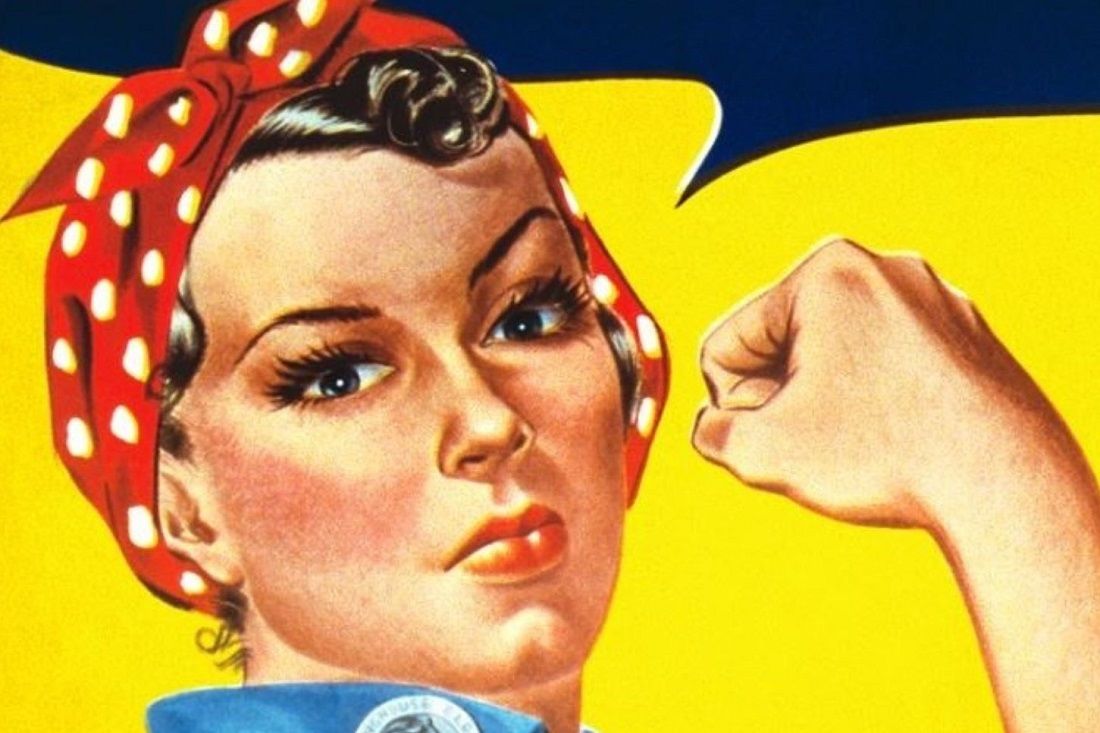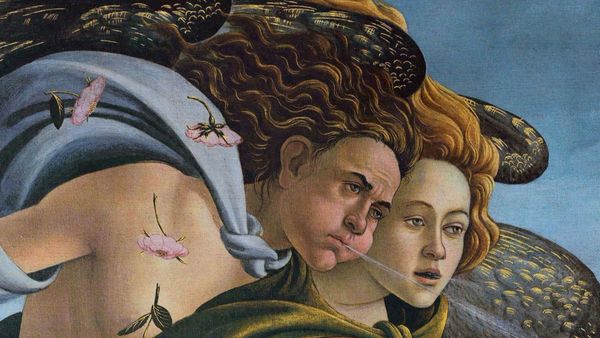I was reared in the cradle of Evangelical Protestantism. I passed from girlhood to womanhood in that world, and during the tumult of puberty an increasing awareness of my unruly female body introduced me to the contested terrain of “womanhood” itself. What is a woman? What is her place? What are her gifts and limits?
In an Evangelical context, such discussions and demarcations focused primarily on the concept of roles. What is it that woman is supposed to do? Or, more to the point, what is she not supposed to do? I was something of a tomboy, with bushy eyebrows and generous facial hair. I was competitive, but also tenderhearted. I anthropomorphized everything, in accordance with the stereotypes of my sex, but I enjoyed doing boyish things. I loved sports. I wanted to be fast. I wanted to win.
On the sports field, there seemed to be no limits. But lines were drawn starkly in church. A woman’s role, her task, was to be a helpmeet to her husband and care for her children. The conclusion of the argument against women in ministry, unanimously accepted in my church, came from a straightforward reading of scriptural mandates (e.g., 1 Tim 2:12). Supporting premises, however, were smuggled in through the back. Women must not be as capable of effective leadership. They are perhaps too emotional, too fragile, too conciliatory. A woman is equipped to serve and nurture, but not to lead. The what-ness or quiddity of woman, then, was assumed to come from her designated role. In other words, who she is was inferred from what she should—or should not—do.
As something of a misfit in that world, I fell easily for the siren song of feminism in college. Initially, feminism seemed a welcome corrective to the narrow limits placed around women in conservative Evangelicalism; gender roles were refreshingly heretical and equality was dogma. I was encouraged to define myself not relationally, as a future wife and mother, but meritoriously, by my professional work.
The classic feminist argument affirms sex role fluidity—a woman can do whatever a man can do. Thus, a different notion of woman’s essence is presupposed: namely, none. Instead, women and men become essentially interchangeable, essentially the same. Because a woman can do anything, she no longer is anything in particular.
Glaring differences aside, the internal logic in these two systems are much the same. Feminism is likewise preoccupied with doing. The “empowered woman” is measured by her success, her achievements. Think of Rosie the Riveter, perennial feminist icon, flexing her bicep under the hovering bubble of her motto: “We Can Do It!”
In both realms, then, woman’s being is secondary. Neither sphere presents a satisfactory notion of her intrinsic value and identity, irrespective of action or role.
Only Catholicism provides this. But to see it, one must venture under the canopy of a sacramental cosmos and begin to think about sex entirely differently: not in terms of role, but symbol. This requires forgetting certain glittering myths of our day and embracing an ancient way of seeing.
Regarding Ourselves as Creatures
First, we must begin again to regard ourselves as creatures. Thinking of the human person as a being who is created radically shifts the ground of this discussion. This sets the frame of a transcendent order, an order beyond the natural that grounds its existence and safeguards its meaning. To be a creature, rather than a happy accident, establishes the human as a being-in-relation with the divine. We are not alone in the cosmos; always, whether we acknowledge it or not, whether we are aware or not, we live and move and have our being in God.
Moreover—and here is where the Catholic imagination lights the way—the temporal reveals the eternal. The visible world discloses the invisible. Beyond mere empiric or concrete functions, the stuff of the world holds a symbolic purpose. Our sensible reality makes tangible to us the things of God.
The human body, as part of the material world—indeed, its most noble aspect, alone capable of recognizing divine disclosures—likewise serves as sacred symbol, particularly in its dual incarnation. Humans, after all, are sexed; there is no unsexed human being, and the continuation of our existence depends upon the distinctive reproductive niches that we have developed as male and female.[1] Contrary to contemporary innovations, which speak of sex as “assigned” at birth, as something not read from the body but arbitrarily imputed to it, the Catholic view holds that there is a givenness to our bodies; they are inscribed with sacred meaning that is not determined or constructed by our whim. Bodies speak the language of symbol, with or without our permission.
The Symbolic Meaning of Woman
What, then, is the symbolic meaning of woman specifically? What divine truth does she proclaim through her form?
Sacred scripture and tradition give us a central metaphor to understand the relationship between God and humankind: this is the metaphor of conjugal union. This is an intensely bodily metaphor, evoking the image of man and woman becoming one flesh. Such union is made possible by complementary sexual difference. To speak in crudely biological terms: in sexual union, the couple joins their incomplete reproductive systems to become a complete reproductive unit. Both man and woman bring to this coupling the intrinsic potential to create a new person; they have within themselves the seeds of life—but the modes of their potentialities are not identical. The man has the capacity to transmit life outside of himself, while the woman has the potential to gestate new life within.
If we take these biological realities as a mirror for God and humankind, the male sex is analogous to God because God endows life from himself but stands apart from it; he transcends. And the female sex is representative of humankind because its power lies in receptivity; the human being is created to receive the love of God, be inwardly transformed, and let that love bear fruit.
Woman: Representative Human Being Before God
In 1934, Gertrud von le Fort, a German author and Catholic convert, wrote a slim volume entitled The Eternal Woman: The Timeless Meaning of the Feminine, a short but profound meditation on the significance of woman “under her symbolic aspect.”[2] According to von le Fort, in the “order of grace,” as understood in Catholicism, “surrender to God is the only absolute power that the creature possesses.”[3] By surrender, von let Fort does not mean a reluctant submission brought about by force—no, this surrender is a freely given assent to be subsumed by divine love.
Receptivity to God, embodied in the form of woman, is humanity’s ultimate purpose. This is the telos of our existence—saying yes to divine grace and welcoming the inner metamorphosis it brings. Woman, then, is the representative human being before God; she carries the image of this receptivity to which all are beckoned, whether male or female.
Because we are unused to thinking about sex in symbolic terms, it is easy to misunderstand the argument. I am not here suggesting that all women must be mothers in the literal sense, or that women are more spiritual than men, or that men are more proximate to God. These objections forget that we are dealing with symbols—more specifically, a metaphor of the relation, not of God or humanity in isolation. Each sex is telling the same story of divine-human communion through the language of the body, albeit from two distinct angles.
In every Mass, this metaphor is being staged, because the Mass is a nuptial feast, the wedding supper of the Lamb. The priest stands at the altar in persona Christi as an icon of Christ in his role as high priest—and also as Bridegroom. The assembled body of the people is the Bride, brought before the altar to taste the sweet consummation of the Eucharist. The Bridegroom gives us his body, and we welcome him; we receive the divine life he offers, and pray that it will become fruitful in us.
The traditional practice of veiling makes visible the nuptial structure of the Mass and the bridal character of the people. Both men and women are Christ’s Bride, but it is woman who, through the language of bodily form, uniquely proclaims this. The veil, whether at the marriage altar or in the Mass, signals the hidden spiritual fecundity of which woman is the sign.
The liturgical drama of the Mass depends upon this symbolic dimension. This is one reason—perhaps the most compelling—to embrace and preserve the Church’s declaration that priests must be male. This is not, contra my Evangelical upbringing, because men have some shared capacity, skill, or accomplishment that women do not—no, their bodies simply point toward different spiritual realities. In the same way that water naturally symbolizes that which cleanses and quenches, the male form evokes the image of husband and father, as the female form does mother and bride.
Divesting the Mass of its symbolic texture in order to satisfy a modern egalitarian impulse would be a desecration, a dismantling of the sacramental Catholic cosmos.
That alone—the preservation of the liturgical iconography—is sufficient grounds for reclaiming and safeguarding the symbolic meaning of bodily sex. But here’s another reason: this aspect of the Catholic imagination provides an antidote to cultural ills, namely the disordered perception that the worth of human life is contingent on external factors. It is the image of the unmarried woman, the virgin who is neither mother or bride, who represents this absolute dignity of the human person. At first glance, the virgin seems to stand outside the nuptial schema as previously described, but according to von le Fort, it is her marginal position that gives the virgin a particular symbolic power.
The virgin represents the human being alone before God, divested of any extrinsic valuation. The never-married woman who, in our time, is too often pitied and disregarded, here holds profound meaning as the emblem of “a person’s value, as directly and ultimately related to God.”[4] This archetype of the virgin safeguards human dignity, exemplifying “the inherent value of the person as independent of every achievement.”[5] She “proclaims that the creature has significance,” one independent of utility, status, production, or accomplishment.[6] Here, in the figure of the virgin, the stark divide between the Catholic emphasis on being rather than doing is sharpest.
Mary: Consummate Embodiment of Christian Devotion
Fittingly, von le Fort’s meditation on woman begins and ends with the mother of God, because in Mary the symbolic character of woman reaches its apex. Through her, the invisible becomes tangible to an unparalleled degree. Through her, the Divine Word becomes flesh and pitches the tent of his body among us. Von le Fort presents Mary as “standing for the creature in its totality” and representing the spiritual fulfillment of both sexes.[7] This figurative role, fulfilled in Mary, is open to every woman:
We have come to the ultimate consideration. Woman’s mission, winging far beyond the woman herself, touches the mystery of the world. The Annunciation to Mary is a message to every creature, but to the creature as represented in Mary. The renewal of the eternal image through the Marian mission of the woman completes itself in the vicarious role of her who represents the creature. Mary stands for her daughters, but her daughters must also stand for her.[8]
Mary is the consummate embodiment of Christian devotion. The aim of every Christian should be to enter into Mary’s fiat and make it his or her own. And it is woman, whether married or single, mother or not, who carries this sign of free and complete abandonment to God. In the person of Mary, the symbolic dimension of woman becomes united with concrete human existence; these realms touch and converge in the instant of Incarnation.
Viewed is a purely naturalistic sense, Mary can be misread as an impossible ideal imposed upon women, as no one else can be both virgin and mother. But if these varying states of a woman’s life are understood at the level of symbol, they are not mutually exclusive, but interconnected. As bride and mother, woman represents the reception of divine grace and the fertile ground of an interior life, which quickens Christ within. As virgin, she is the bodily sign of the human person whose value is rooted not in earthly bonds, but in Christ himself. Each woman, no matter her state in life, embodies simultaneously this three-fold symbol. This taxonomy imbues each female body with divine significance, even—especially—those our culture deems most worthless, like the ailing, the aging, the dying: “It is the lonely woman upon her sickbed who can but carry the growing Christ within her own soul.”[9]
The sacramental, analogical imagination of Catholicism shifts the worthiness of woman from doing to being. As von le Fort puts it, riffing on St. Augustine: “Be truly a woman, and do what you will.”[10] Bodily sex is not made purposeful through mandated tasks or restrictive temporal roles; the supreme meaning of our sexed natures is to be living, visible icons that gesture continually toward the world beyond the veil.
[1] Congenital disorders of sexual development do, of course, exist. These conditions do not, however, indicate a lack of sexual differentiation, or some sort of neuter of third sex, but rather an atypical development of maleness and femaleness.
[2] Gertrud von le Fort, The Eternal Woman: The Timeless Meaning of the Feminine (Ignatius Press, 2010), 3.
[3] Ibid, 18.
[4] Ibid, 26.
[5] Ibid, 35.
[6] Ibid, 26.
[7] Ibid, 5.
[8] Ibid, 108.
[9] Ibid, 104.
[10] Ibid, 62.


